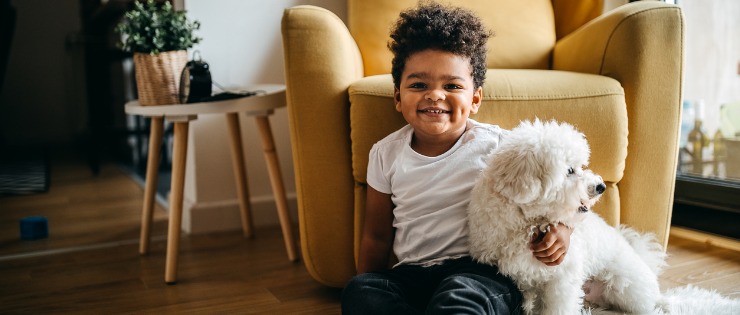
Dogs and kids – it’s always a contentious topic. And they say, never work with kids and dogs; but I do both! So, I want to share with you my views from the perspective of an animal behaviourist as well as a teacher of children. Firstly, it is true that children under the age of 9 are the most likely to be injured by a dog bite. And secondly, most of these dogs are well known by the child.
Children around this age get bitten for a range of reasons. From my experience, and from the literature I have read, young children can be perceivably scary, annoying and disrespectful of dogs without even realising. Children are often a similar height to the dog, and toddlers are especially terrifying when they express themselves with their voices and swift body movements. Space and respect are things that young children do not inherently understand, and need to learn; meaning that kids often get in the face and space of dogs that can eventuate into a nasty ‘I’ve tried to warn you many times!!’ dog bite.
I have never ever seen a companion dog bite a person without warning them first. And, this is where it gets complicated with children. Often, the dog has told that child and parent in numerous ways ‘please leave me alone’. Some cues are:
The dog moving away from the child
The dog’s white in their eyes showing as the child invades their space
The dog’s tail between their legs or swiftly wagging low to the ground
The dog panting, and unsettled in the company of the child
The dog not approaching the child
The dog’s head cowering down in the company of the child
The dog growling
The dog snapping at the air or towards the child
Above are just 8 signs a dog is desperately trying to communicate with the child. If any, many or all of these are ignored, it seems fair from the dog’s point of view to bite. Biting gets the kid to stop. And that is what the dog wants! Dogs don’t want to bite. If they did, this would be their first choice, rather than their last. Ultimately, it is not the child’s fault either. It is always the responsibility of the adult to care for and protect the needs and safety of the dog and the child. So, here are some tips to help build a bond between your dog and your child, making for a lasting and trusted mateship.
8 ways to build the best relationship possible:
If you have children and you are thinking of getting a dog, wait until your child is at least 6 years of age
Teach your children the value of thinking from the dog’s point of view. In all your conversations about emotions, as your child how the dog would feel in that situation too. This helps to develop empathy, respect and trust which are the cornerstones for building the best relationships
Never allow a child to approach a dog, especially when the dog is in their bed, asleep, or eating. Some dogs can be nervous about their toys too, so keep your children away from them when they are playing with their toys as well
Give your dog access to a space that your children cannot get to
Teach your children the importance of responsibility and the privilege that comes with having a dog in their life. Involve your children in the care of the dog and make it valuable to help look after the dog
Teach your children about how intelligent dogs are and how much we are like them. Dogs are not robots, and they are not creatures who belong in a back yard all day and night. They are living, feeling beings just like we are. Without anthropomorphising, educate your child about the connection they have with dogs, where dogs have come from and why we call them Man’s Best Friend
Include your dog in every aspect of your family life. One of the saddest mistakes some parents make, is removing the dog from the family once they have a baby. Instead, involve your dog in all of the caretaking and reward them with yummy treats when they show cooperation. Please dot cast your dog outside, away from the family unit.
Lastly, never ever leave a child and dog unsupervised. In honesty, I say this because I am more worried about what the child may get up to, rather than the dog. Even if the risk seems incredibly low, the consequence of a child invading your dog’s space and inadvertently disrespecting them could be devastating for both of them.
I had the privilege of growing up with dogs and if it weren’t for them, I may never have been able to experience the love for nature and animals the way I do. Dogs are incredible friends to us, and for a child, dogs can teach them things that we don’t even know about. And because of this, it is crucial we open our hearts and minds to learn from them too. You may be surprised just how much you can learn from a dog!